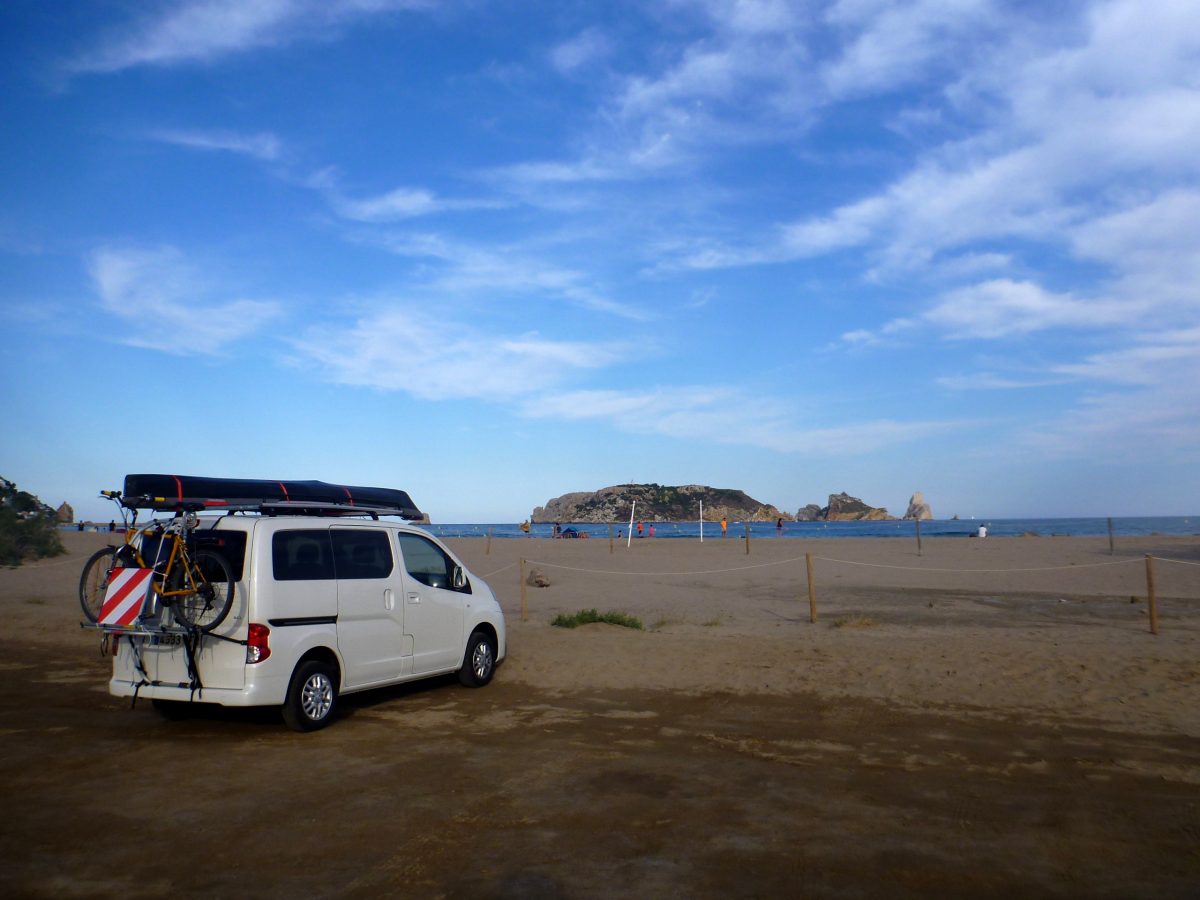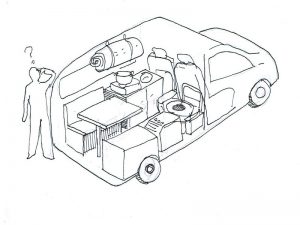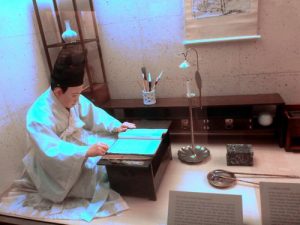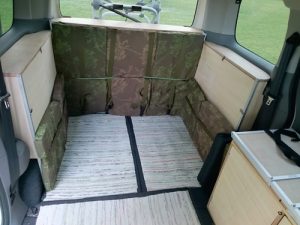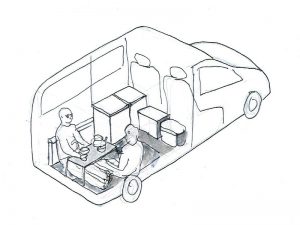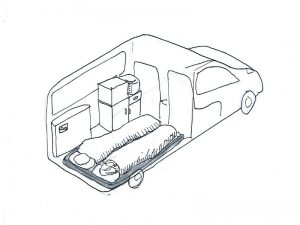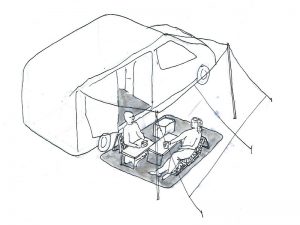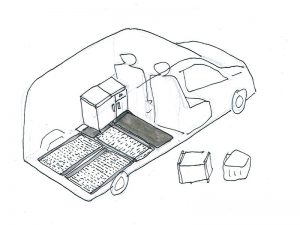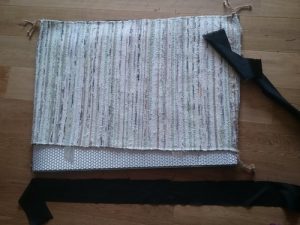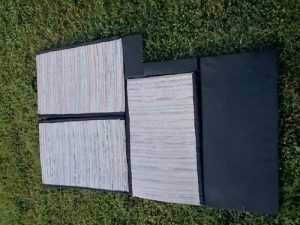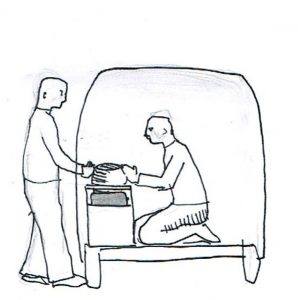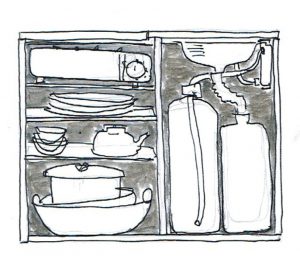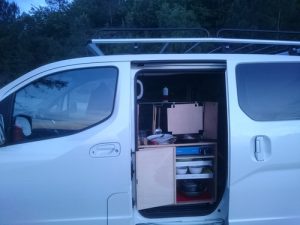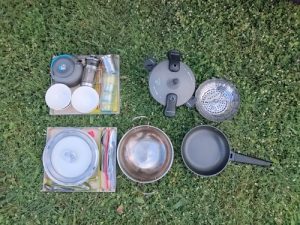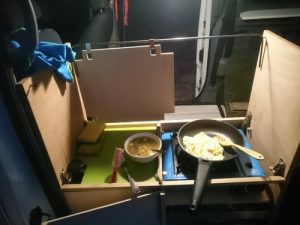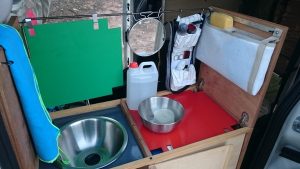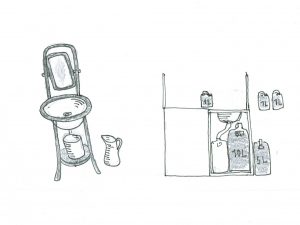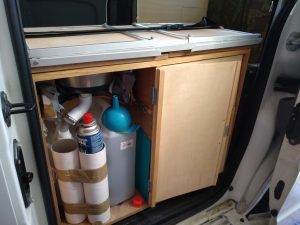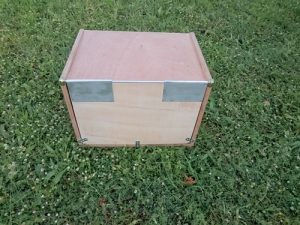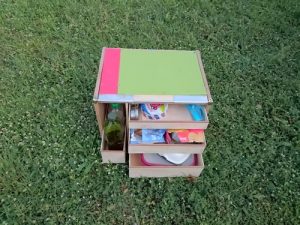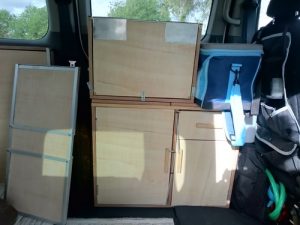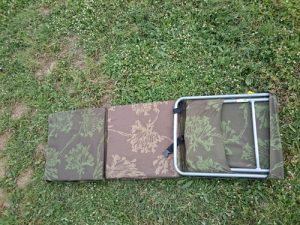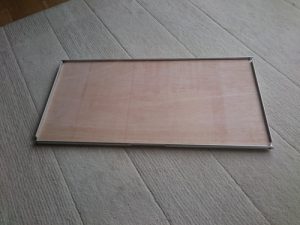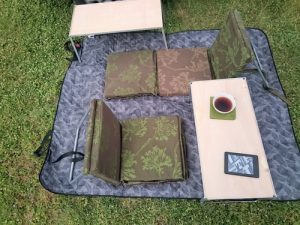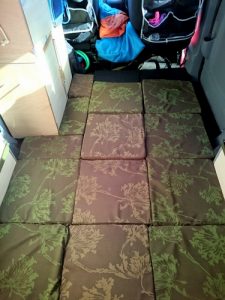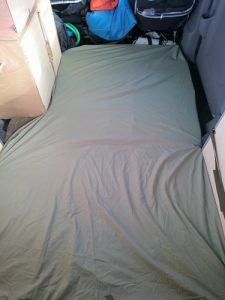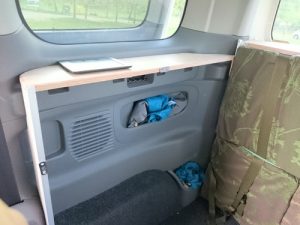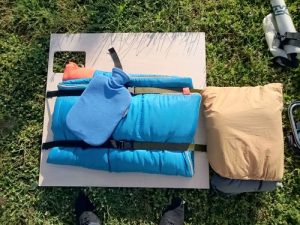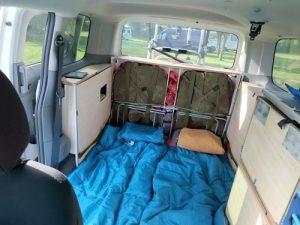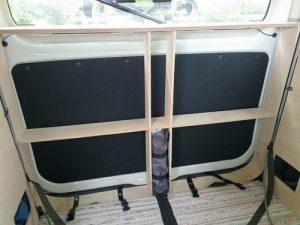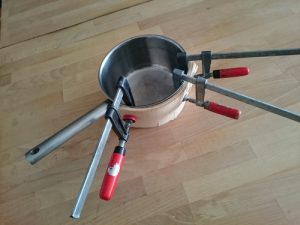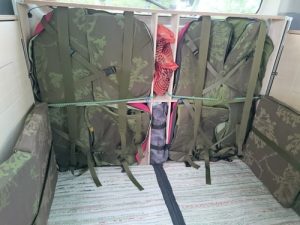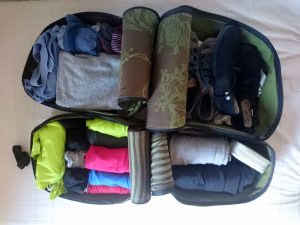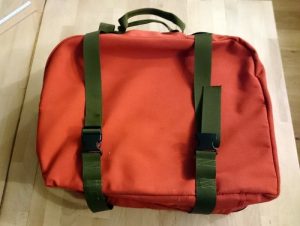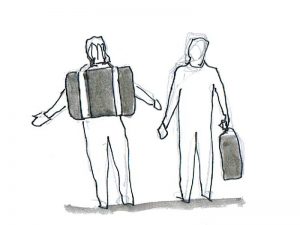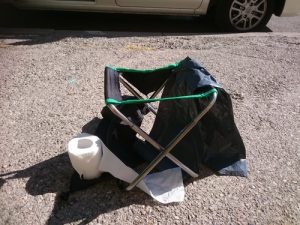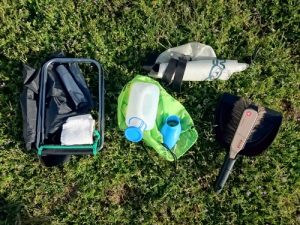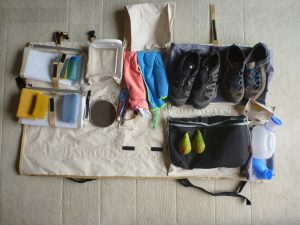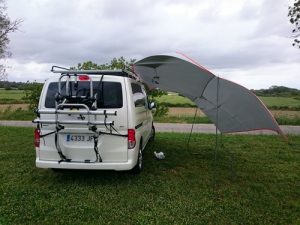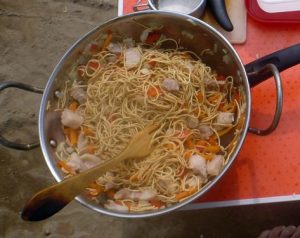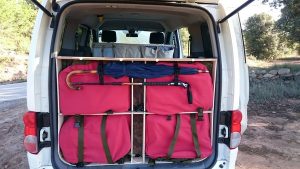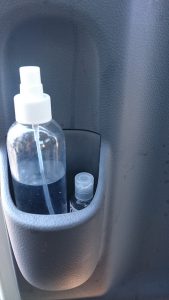Concept
Tatamis
Chuckbox, pantry cabinet
Tables and chairs
Bed
Clothes cupboard
Evacuation, cleaning, power
Backseat container
Sunshade, extra baggage, recipes
Concept
Adjusting to a limited budget, fitting in my parking place and being able to navigate small streets in villages have been the reasons to choose the small Nissan NV200 as the van to prepare as a camper for two people. Ideally the van should be a small space to live mobile, a studio-hut with wheels. Once teh second row of seats is removed the available space is just 190cm x 120cm x 130cm. This should be enough to:
- cook and store food supplies for 3 days
- wash, and evacuate if necessary
- sit at a table inside and outside
- sleep
The problem is how achieve this and still have room enough to live so that it is a hut on wheels and not just a storage cupboard with wheels. On budget grounds and to avoid homologation issues I discarded swivel seats and elevating roof. I had realized that i would not be able to cook standing inside, I would have to kneel. This suggested the idea of Japanese rooms, where people sit and sleep on the floor. This way, the distance from the head to the ceiling is 40cm longer tan when seated on a chair or laying on a bed.
Thus, the basic design choices have been:
- do not alter the vehicle structure
- to sleep and to sit on the floor as in a Japanese room
- sacrifices: do without a fridge, second battery, and chemical toilet
- compact all I could reusing elements when possible
In sum: “A place for everything and everything in its place”
The van would have three layouts:
- Day: items stowed when driving, cooking and eating inside
- Night: items stacked to make space for sleeping on the floor
- Outside: cooking, washing and eating outdoors
Designing the solutions has been exciting, to build them exhausting, often undoing and redoing because of mistakes. The results are far from perfect, sometimes because I didn’t have good enough tools, but mainly because my little skills in woodworking and sewing and also, for being careless. After this humbling experience now I value a straight seam or a clean wood finish when I see it.
Tatamis
To level the floor, insulate and to be able to sit comfortably I built a kind of “low cost tatami” with two layers of hiking mat, and an Ikea rug and a sturdier canvas in the front area.
Chuckbox, pantry cabinet
Requirements to meet:
- To be able to use both from the inside and outdoors it should measure the same as the sliding door.
- One part would have the stove and cooking utensils and dishes.
- The other would have a little sink (that I made boring a cheap stainless steel salad bowl), a 10l jerry can of water and a can of 5L to empty. Without a second battery a hand pump has to be used, and it’s not the smoothest way.
[Update: As the manual pump was not easy to use I took inspiration from old washbasins. Now I have one 10L jerry can, one 5L can and three small 1 L cans to use with the basin and that are easy to carry in a backpack to refill. Getting rid of the pump there is space for some cardborads tubes that can store four extra gas cartridges.]
A pantry cabinet that can be also a working surface and can be transported outdoors or stacked on the chuckbox. The size is optimized to contain a bottle of olive oil and standard toasts and cookie boxes.
Tables and chairs
Inside the van I would seat on the floor with the back resting on a pillow. Outside, I would adapt a beach lounge to fit the pillows and be able to adjust it to use in a straight or reclining position. The pillows can be arranged to be used as a mattress. The tables are just a wood tray with aluminium legs than can be folded so that they can be stored on the chuckbox.
Bed
The chair pillows plus some extra can cover all the floor as a mattress. The one sleeping on the left has less leg space. I wanted to store thesleeping bags in the space over the wheel and compress them without building a whole cabinet. I fixed two shelves so that they could hold a board with the sleeping bags, an inflatable pillow and a hot water bottle, that would have to substitute the non existing heating during cold nights.
Clothes Cupboard
I intended to allocate clothes and baggage in the 10 cm width space in the back door but if I were to build a proper cabinet I would have less space. Also I thought that I would need a bag to carry my stuff if were to spend some nights in a hotel, a friend’s place or perhaps, during a very long trip, flying back home a few days. I thought I could use the very bag/suitcase as a kind of “closet” supported on a wooden frame. (As the bottom of the van is curved I had to bend the wood using a pressure cooker to soften it and holding it with clamps; quite a challenge for me). Inside the suitcase I would have four zipped containers to organize my stuff. The chair frames could be stored in front and everything covered with its pillows. The bag can be carried both holding hands or as a backpack.
Evacuation, cleaning, power
Parked in an area without WC, or in a village when everything is closed, the need for liquid or even solid evacuation may arise. The first problem was solved with a urine bottle (an adapter allows it to be used by females too). Regarding the second problem I thought that, if dog owners can fetch its feces in a bag and throw it in a bin, I could to the same with the help of a small foldable stool. The cleaning stuff is completed with a small vacuum cleaner, broom and dustpan. Between the seat and the chuckbox there is a spare 10l jerry can for cooking and a 5l drinking jerry can.
With no fridge or pumping water I just need power to charge two LED lights that hang from the ceiling, mobile, camera and Kindle. Two hours driving suffice to charge it all and in case I stay in the same place without moving, a 22000 mAh power bank can charge the phone up to 4 times.
[Back seat container]
Temporarely I used some ready made back seat bags to store towels, trashbin, sponges and urinal. But wet towels and sponges should be able to dry and I needed space for storing shoes besides wanting everything to look better and tidier. I prepared a container to hold:
- mesh bag for washing dishes
- mesh bag for sponges
- easy access to toohbrush without opening toiletry bag, mirror
- towels
- shoes
- pantry bag
- urinal bag
Sunshade, extra baggage, recipes
The van can carry two bikes, and two bags on the roof rack wpould contain two folding kayaks. During the night if necessary the bags can be stored inside on front seats. The bags contain also extra things that don’t fit inside, tools, and a sunshade.
During a trip I can be up to 4 days wild camping before stopping to a place where shower and food are available. What kind of food supplies can survive without a fridge? Actually humankind has done without for centuries. Honey, salted bacon and salted cod can stay for months without a fridge, and eggs at leat for a week. I’ve invested in a samll pressure cooker that allows to cook consuming less fuel and less water, avoiding the risk of spills.
- Breakfasts: tea or coffee, toast, cookies, cheese and honey
- Salads: Tomato, cucumber, carrot, onion lettuce rots fast )
- eggs, cheese, sausages, canned tuna
- Soups: onions + wakame seaweed + noodles (opcinal stock cube)
- Woks: onion, carrot, salted pork, Chinese noodles
- Rice with dehydrated mushrooms and salted cod. I put the cod in water in the morning and in the evening cook it toghether with the rice without adding salt in the pressure cooker. 2 parts of water / 1 part of rice and you get kind of risotto in 2 mins after boiling.
- In addition, pasta, canned peas or lentils, or couscous (the fastest way to get carbohydrates), prepared mashed potatos.
- As for sauces, olive oil + spices such as curry are perfect
[Update: At the bags back I can carry a huge shepherd’s umbrella from the ’70s and a walking stick. As it’s cumbersome to open the chuckbox everytime I need to wash hands, I use a hand sanitizer and a water spray.]
Last but not least, I couldn’t forget the unmissable furgoperfecto map
